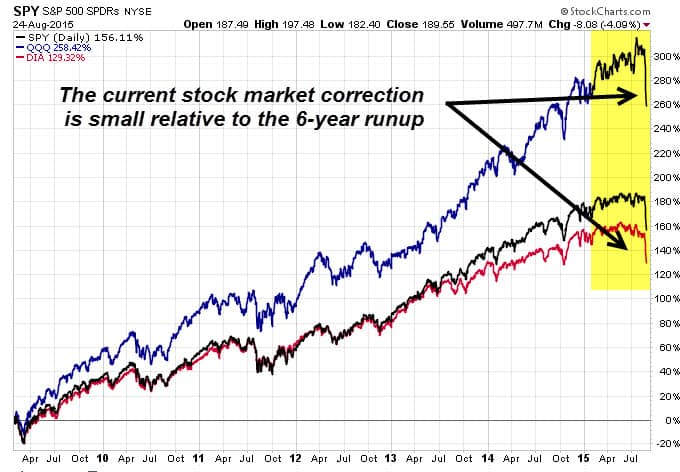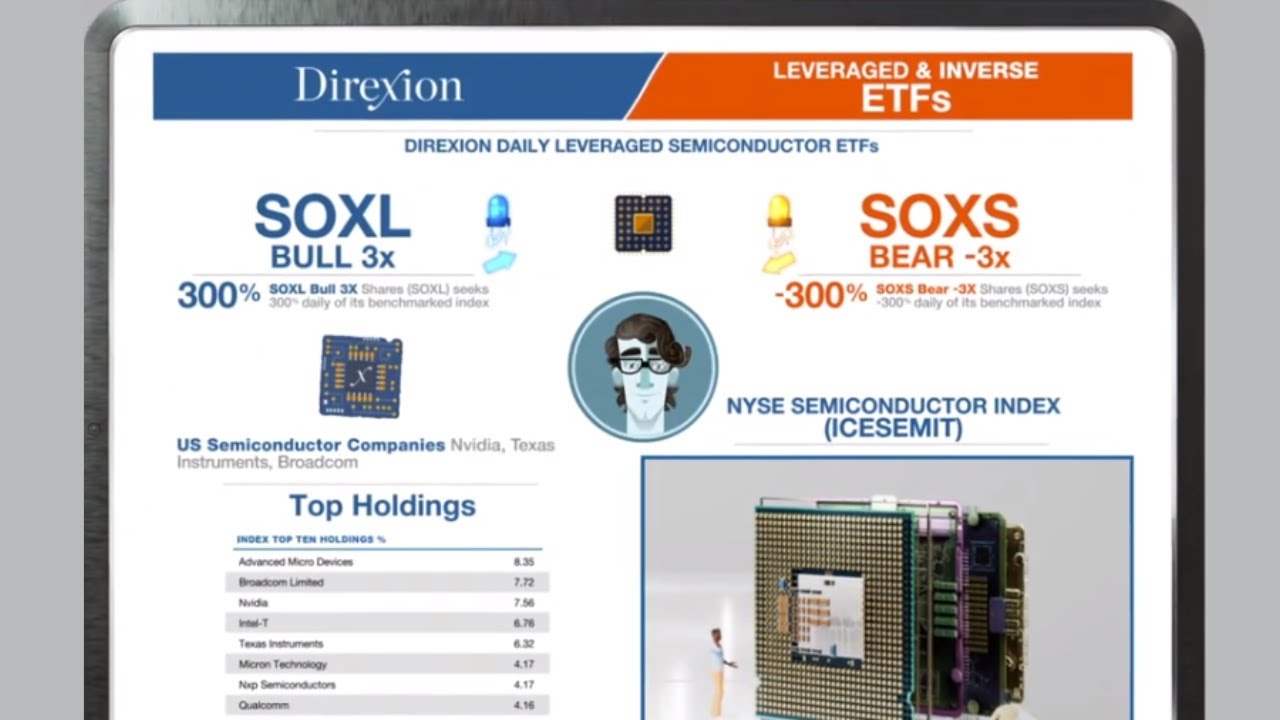In case you didn’t get the memo, global stocks are now in correction mode. And the velocity of the rout has been shocking to seasoned financial pros not to mention the investing masses.
For perspective, the three largest U.S. stock benchmarks – the Dow Industrials (NYSEARCA:DIA), Nasdaq-100 (Nasdaq:QQQ), and S&P 500 (NYSEARCA:VOO) are up between 129% to 258% since hitting their 2009 market bottom. Over the past month, all three U.S. stock benchmarks have shed between 9% to 13% in value.
In the context of triple digit gains over the past six years, the current selloff is still just a flesh wound. (See chart below) That, however, doesn’t necessarily mean your investment portfolio is bear market ready.
(Audio) Listen to Ron analyze and grade a $2.1 million portfolio
How would your portfolio do in a bear market of -25% losses or worse? Here are four signs that could indicate you’re not ready.
Sign #1: The risk character of your portfolio is out-of-whack with reality
When the risk character of an investment portfolio is incompatible with your life circumstances, your age, and your ability to tolerate risk – bad things happen. I’ve seen this sad condition consistently with the portfolios that I’ve analyzed using my Portfolio Report Card grading system.
Often, it’s only after portfolios have suffered significant losses do people begin to understand their investments are far too risky and not compatible with their situation or themselves. What about the big-mouths who brag they can tolerate a 50% loss or greater inside their portfolio? These types of crash dummies are typically the first ones to jump out of the window.
Sign #2: Your portfolio is 100% fully invested
Wall Street likes to recommend investment portfolios that are “100% fully invested” because it allows their fee sucking institutions to maximize profits. For the individual investor, however, a fully invested portfolio is bad because it allows zero financial flexibility.
For example, when stock prices (NYSEARCA:VB) are falling, the fully invested portfolio cannot buy stocks at lower prices because it’s fully invested and falling in value just like the rest of the market. On the other hand, a portfolio with cash isn’t forced to sell assets to raise cash in order to buy stocks or whatever else at bargain prices.
Take a clue from the world’s greatest investors like Warren Buffett and a tiny minority who always keep cash inside their portfolio for big opportunities.
Sign #3: Your portfolio lacks a margin of safety
The financial advice to “do nothing” – which is now being spewed by a certain mutual fund giant and its famous founder – incorrectly assumes that Joe and Jane Investor have architecturally sound portfolios which are built to withstand not just a friendly market climate, but a nasty one. More pointedly, the dogmatic belief that long-term investing will magically fix a broken and misaligned portfolio is ignorant.
All portfolios – large, small, old, and new – should have a margin of safety. Although Graham and Dodd – the founders of value investing – talked about margin of safety in the context of selecting individual securities, it also applies to how a person assembles their investment portfolio.
An investor’s margin of safety represents the money they set aside from the two other containers within their portfolio (core and non-core portfolios) to be invested in fixed accounts with principal protection. The prudent investor doesn’t wait until the house has burned to the ground to install a margin of safety inside their portfolio. They do it before the fire.
Sign #4: Your portfolio is one-dimensional
Any investment portfolio that is built around one asset class, one stock, or one-concentrated thing is one-dimensional. And the inherent problem with one-dimensional portfolios is they aren’t adaptable. This means they aren’t equipped to provide satisfactory performance when the market cycle where they once thrived in abruptly change.
One-dimensional portfolios always have higher volatility (NYSEARCA:VXX), higher drawdowns, and lots of unnecessary risk. And the best way to avoid having this type of poorly built portfolio is to hedge by diversifying across multiple asset classes like bonds (NYSEARCA:AGG), commodities (NYSERCA:GCC), real estate (NYSEARCA:RWO) and collectibles.
Summary
Your investment portfolio doesn’t need to suffer catastrophic losses before you know whether it’s able to successfully withstand a bear market. How it behaves today during volatile markets, like we’ve experienced over the past week, is a good predicator of how it is likely to perform during a market environment that is the same or worse.
Don’t just observe the warning signs that your portfolio might not be ready for a bear market – but prepare ahead by fixing the flaws inside your portfolio before the storm. Ultimately, well-built portfolios aren’t just multi-dimensional in nature, but they’re designed to perform in any kind of financial climate.
Follow us on Twitter @ ETFguide




